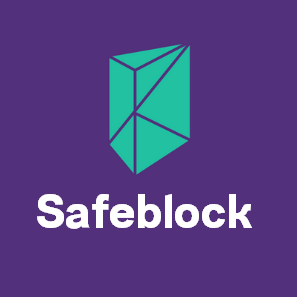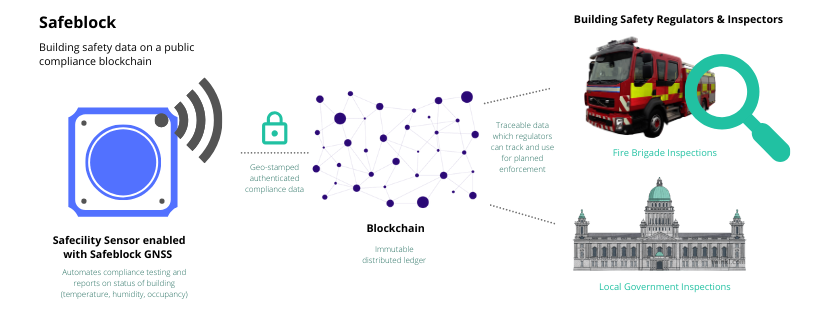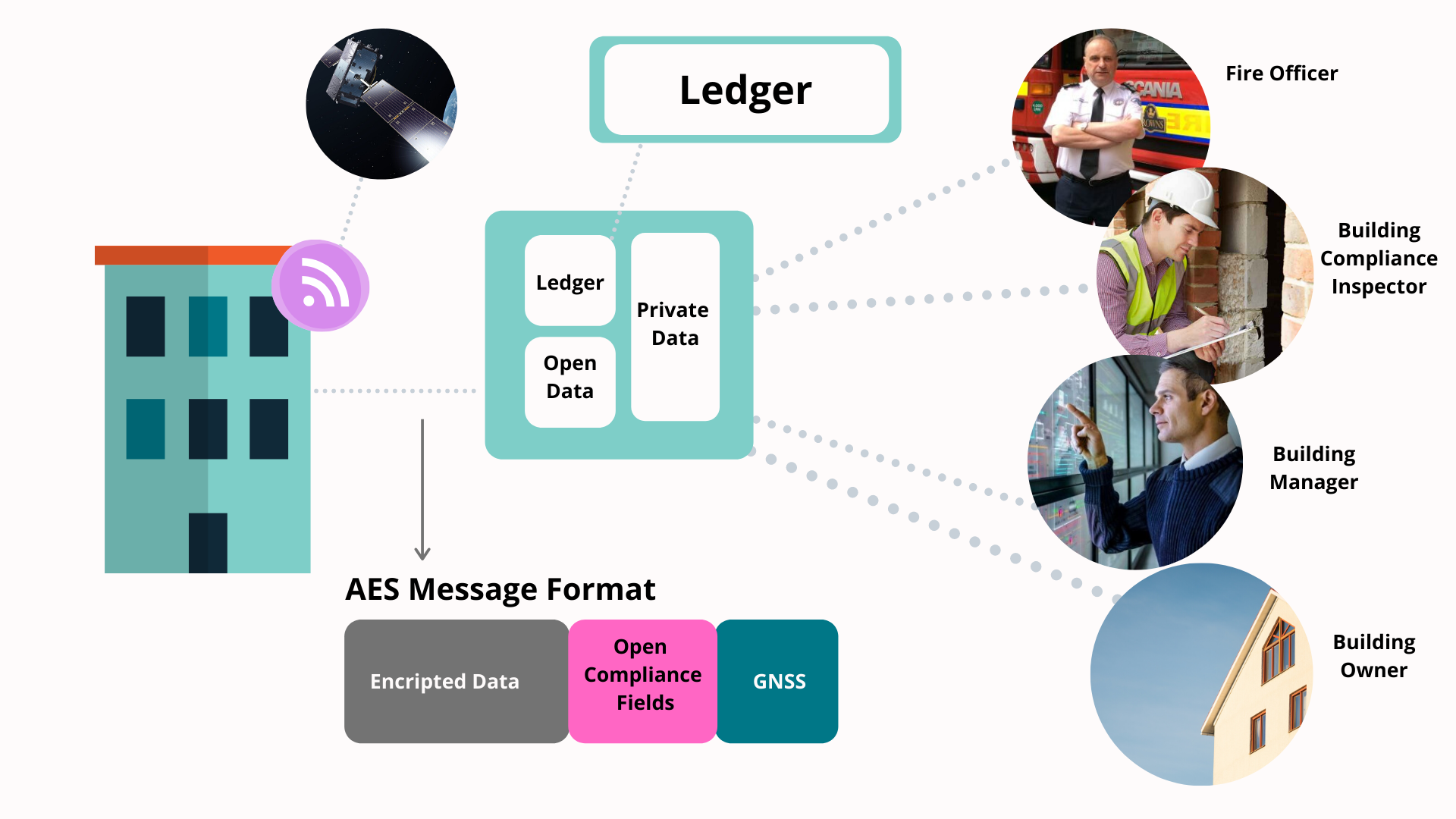
Objectives of the service
Using GNSS and blockchain technology real-time data from ‘smart buildings’ can be gathered to assure compliance with safety standards and regulations. This kind of technology represents a crucial development in the capacity of regulators to improve transparency, target enforcement and transform their regulation and compliance practice in line with new technological development.
Building safety regulation, particularly fire safety is currently under the spotlight with building owners under increasing pressure to prove compliance. Currently safety testing is an overwhelmingly manual non-digital process; government regulators are unsatisfied with the reliability of test reports and record keeping practices. Using IoT technology, this manual compliance process can now be transformed into an automated system. Safeblock aims to work with IoT sensors to ensure the truthfulness of safety testing data by authenticating at source. The use of blockchain also works towards unquestionable reliability of the collected data. Safeblock addresses the need to provide end-to-end safety data integrity to satisfy regulators and compelling building owners to adopt a culture of safety.

Users and their needs
When it comes to building safety, public housing providers face stricter regulations year on year. UK Housing providers are still reeling from the Grenfell Tower tragedy after which serious failures in safety compliance were highlighted in many high-rise buildings all over Britain. Advancement in IoT and sensor technology means safety system monitoring and compliance can be carried out in a more streamlined digital manner than ever before, however, regulators are still cautious about data integrity.
The Convex Lens are directly engaging with local government regulators and housing authorities who desire a framework for a secure method of digital building record keeping. During this feasibility study investigation towards addressing this unsatisfied need through data authentication at source and secure blockchain reporting was carried out.
Users of a public building compliance blockchain are:
- Government regulators
- Local Fire Officers
- The Housing Ombudsman
- Housing Authorities
User needs are:
- Open and transparent building safety reporting system
- Incorruptible record keeping
- Geo-stamped authentication of data at source
- Scalability
Target region: United Kingdom
Service/ system concept
Safeblock consists of two interoperable products.
- A blockchain.
- IoT sensor which automates compliance testing equipped with satellite navigation authentication.
IoT sensors will carry out legally required periodic compliance testing on life safety systems (smoke alarms, emergency lighting etc). The compliance data that is generated by the sensors which indicates a pass or fail status of the equipment is GNSS authenticated at source. This compliance data is then digitally reported to the Safeblock blockchain.

Space Added Value
Safeblock uses GNSS to authenticate safety data at source. Data consistency and reliability are essential to trust in the building compliance sector. Currently the sector is dominated by manual collation of data, arbitrary internal evaluation by internal stakeholders and eventual dissemination to multiple governmental departments. By pioneering an open data approach, with data source integrity enhanced through GNSS signing and stored data being available for audit through distributed ledger technologies (DLT). Safeblock uses space assets to address key issues in todays compliance environment.
Space Asset Advantages
- GNSS data locates assets accurately reducing human error in record keeping.
- A GNSS enabled compliance device can enhance data originating from non GNSS devices reporting through common gateways (cell towers, WIFI access points etc...) by allowing simple consistency checks to flag large discrepancies.
- GNSS chipsets provide a well-known and recognisable data field for use in message signatures.
- Reliable GNSS location information in open data set allows map driven analysis of safety compliance - hot spots of non-compliance, late maintenance, influence of external factors.
Current Status
The feasibility project started on 2nd August 2019 and ended on 13th February 2020. The project plans to be demonstrated in collaboration with government regulators and housing authorities in the UK and Ireland



